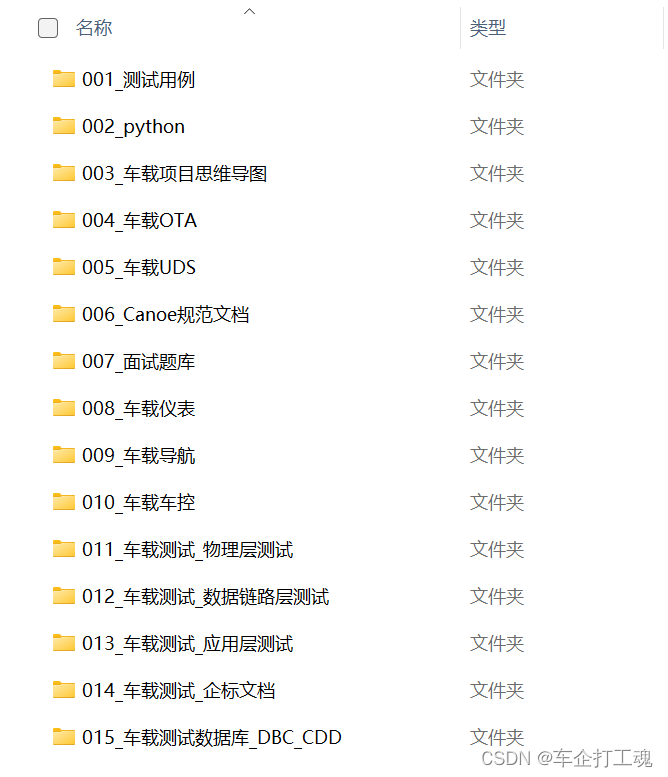1. list的介绍及使用
1.1 list的介绍
1.list是可以在常数范围内在任意位置进行插入和删除的序列式容器,并且该容器可以前后双向迭代。
2.list的底层是双向链表结构,双向链表中每个元素存储在互不相关的独立节点中,在节点中通过指针指向其前一个元素和后一个元素。
3.list与forward_list非常相似,最主要的不同在于forward_list是单链表,只能朝前迭代,让其更简单高效。
4.与其他的序列式容器相比(array,_vector,deque),list通常在任意位置进行插入、移除元素的执行效率更好。
5.与其他序列式容器相比,list和forward_list最大的缺陷是不支持任意位置的随机访问,比如:要访问list的第六个元素,必须从已知的位置(比如头部或尾部)迭代到该位置,在这段位置上迭代器需要线性的时间开销;list还需要一些额外的空间,以保存每个节点的相关联信息。

1.2 list的使用
1.2.1 list的构造
析构函数(constructor) | 接口说明 |
| list (size_type n, const value_type& val = value_type()) | 构造的list中包含n个值为val的元素 |
| list() | 构造空的list |
| list (const list& x) | 拷贝构造函数 |
| list (InputIterator first, InputIterator last) | 用[first, last)区间中的元素构造list |
(若为手机阅读,表格可左右移动)

1.2.2 list iterato的使用
此处,大家可暂时将迭代器理解成一个指针,该指针指向list中的某个节点。
函数声明 | 接口说明 |
| begin+end | 返回第一个元素的迭代器+返回最后一个元素下一个位置的迭代器 |
| rbegin+rend | 返回第一个元素的reverse_iterator,即end位置,返回最后一个元素下一个位置的reverse_iterator,即beign位置 |
(若为手机阅读,表格可左右移动)
【注意】
1. begin与end为正向迭代器,对迭代器执行++操作,迭代器向后移动
2. rbegin(end)与rend(begin)为反向迭代器,对迭代器执行++操作,迭代器向前移动


1.2.3 list capacity
函数声明 | 接口说明 |
| empty | 检测list是否为空,是返回true,否则返回false |
| size | 返回list中有效节点的个数 |
(若为手机阅读,表格可左右移动)

1.2.4 list element access
函数声明 | 接口说明 |
| front | 返回list的第一个节点中值的引用 |
| back | 返回list的最后一个节点中值的引用 |
(若为手机阅读,表格可左右移动)

1.2.5 list modifiers
函数声明 | 接口说明 |
| push_front | 在list首元素前插入值为val的元素 |
| pop_front | 删除list中的第一个元素 |
| push_back | 在list尾部插入值为val的元素 |
| pop_back | 删除list中最后一个元素 |
| insert | 在list position位置中插入值为val的元素 |
| erase | 删除list position位置的元素 |
| swap | 交换两个list中的元素 |
| clear | 清空list中的有效元素 |
(若为手机阅读,表格可左右移动)


1.2.6 list的迭代器失效
前面说过,此处大家可将迭代器暂时理解成类似于指针,迭代器失效即迭代器所指向的节点的无效,即该节点被删除了。因为list的底层结构为带头结点的双向循环链表,因此在list中进行插入时是不会导致list的迭代器失效的,只有在删除时才会失效,并且失效的只是指向被删除节点的迭代器,其他迭代器不会受到影响。
错误:

改正:

2. list的模拟实现
实现节点类
template<class T> struct ListNode { ListNode<T>* _next; ListNode<T>* _prev; T _data; ListNode(const T& data = T()) :_next(nullptr) , _prev(nullptr) , _data(data) { } };
实现正向迭代器
迭代器不用实现析构函数和深拷贝。因为迭代器本身就是为了访问链表的节点,节点属于链表,不属于迭代器,如果需要析构和深拷贝,应该在控制链表的类中实现。
template<class T, class Ref, class Ptr> struct ListIterator { typedef ListNode<T> Node; typedef ListIterator<T, Ref, Ptr> self; Node* _node; ListIterator(Node* node) :_node(node) { } self& operator++() { _node = _node->_next; return *this; } self operator++(int) { self tmp(*this); _node = _node->_next; return tmp; } self& operator--() { _node = _node->_prev; return *this; } self operator--(int) { self tmp(*this); _node = _node->_prev; return tmp; } Ref operator*() { return _node->_data; } bool operator!=(const self& it) { return _node != it._node; } bool operator==(const self& it) { return _node == it._node; } Ptr operator->() { return &_node->_data; } };
实现反向迭代器
template<class T, class Ref, class Ptr> struct RListIterator { typedef ListNode<T> Node; typedef RListIterator<T, Ref, Ptr> self; Node* _node; RListIterator(Node* node) :_node(node) { } self& operator++() { _node = _node->_prev; return *this; } self operator++(int) { self tmp(*this); _node = _node->_prev; return tmp; } self& operator--() { _node = _node->_next; return *this; } self operator--(int) { self tmp(*this); _node = _node->_next; return tmp; } Ref operator*() { return _node->_data; } bool operator!=(const self& it) { return _node != it._node; } bool operator==(const self& it) { return _node == it._node; } Ptr operator->() { return &_node->_data; } };
实现控制list的类
template<class T> class list { typedef ListNode<T> Node; public: typedef ListIterator<T, T&, T*> iterator; typedef RListIterator<T, T&, T*> reverse_iterator; typedef ListIterator<T, const T&, const T*> const_iterator; void empty_init() { _head = new Node(); _head->_next = _head; _head->_prev = _head; } list() { empty_init(); } list(const list<T>& it) { empty_init(); for (const auto& e : it) //在范围for上加上引用,如果it内的元素体积很大的话可以减小代价,引用并不会导致浅拷贝 //eg:int a=1;int& a1=a;int b=a1;变量b只是和a的值一样并没有指向同一块空间(int b=a;) { push_back(e); } } list(initializer_list<T> il) { empty_init(); for (const auto& e : il) { push_back(e); } } ~list() { clear(); delete _head; _head = nullptr; } void clear() { auto it = begin(); while (it != end()) { it = erase(it); } } list<T>& operator=(list<T> it) { std::swap(_head, it._head); return *this; } iterator begin() { return iterator(_head->_next); } const_iterator begin() const { return const_iterator(_head->_next); } iterator end() { return iterator(_head); } const_iterator end() const { return const_iterator(_head); } reverse_iterator rbegin() { return reverse_iterator(_head->_prev); } reverse_iterator rend() { return reverse_iterator(_head); } void push_back(const T& x) { //Node* newnode = new Node(x); //Node* tail = _head->_prev; //tail->_next = newnode; //newnode->_prev = tail; //newnode->_next = _head; //_head->_prev = newnode; insert(end(), x); } void pop_back() { erase(--end()); } void push_front(const T& x) { insert(begin(), x); } void pop_front() { erase(begin()); } iterator insert(iterator pos, const T& x) { Node* cur = pos._node; Node* newnode = new Node(x); Node* prev = cur->_prev; prev->_next = newnode; newnode->_prev = prev; newnode->_next = cur; cur->_prev = newnode; return iterator(newnode); } iterator erase(iterator pos) { assert(pos != end()); Node* cur = pos._node; Node* prev = cur->_prev; Node* next = cur->_next; prev->_next = next; next->_prev = prev; delete cur; return iterator(next); } private: Node* _head; };
完整list.h
#pragma once
#include <assert.h>
namespace wmm
{
template<class T>
struct ListNode
{
ListNode<T>* _next;
ListNode<T>* _prev;
T _data;
ListNode(const T& data = T())
:_next(nullptr)
, _prev(nullptr)
, _data(data)
{
}
};
template<class T, class Ref, class Ptr>
struct RListIterator
{
typedef ListNode<T> Node;
typedef RListIterator<T, Ref, Ptr> self;
Node* _node;
RListIterator(Node* node)
:_node(node)
{
}
self& operator++()
{
_node = _node->_prev;
return *this;
}
self operator++(int)
{
self tmp(*this);
_node = _node->_prev;
return tmp;
}
self& operator--()
{
_node = _node->_next;
return *this;
}
self operator--(int)
{
self tmp(*this);
_node = _node->_next;
return tmp;
}
Ref operator*()
{
return _node->_data;
}
bool operator!=(const self& it)
{
return _node != it._node;
}
bool operator==(const self& it)
{
return _node == it._node;
}
Ptr operator->()
{
return &_node->_data;
}
};
template<class T, class Ref, class Ptr>
struct ListIterator
{
typedef ListNode<T> Node;
typedef ListIterator<T, Ref, Ptr> self;
Node* _node;
ListIterator(Node* node)
:_node(node)
{
}
self& operator++()
{
_node = _node->_next;
return *this;
}
self operator++(int)
{
self tmp(*this);
_node = _node->_next;
return tmp;
}
self& operator--()
{
_node = _node->_prev;
return *this;
}
self operator--(int)
{
self tmp(*this);
_node = _node->_prev;
return tmp;
}
Ref operator*()
{
return _node->_data;
}
bool operator!=(const self& it)
{
return _node != it._node;
}
bool operator==(const self& it)
{
return _node == it._node;
}
Ptr operator->()
{
return &_node->_data;
}
};
template<class T>
class list
{
typedef ListNode<T> Node;
public:
typedef ListIterator<T, T&, T*> iterator;
typedef RListIterator<T, T&, T*> reverse_iterator;
typedef ListIterator<T, const T&, const T*> const_iterator;
void empty_init()
{
_head = new Node();
_head->_next = _head;
_head->_prev = _head;
}
list()
{
empty_init();
}
list(const list<T>& it)
{
empty_init();
for (const auto& e : it)
//在范围for上加上引用,如果it内的元素体积很大的话可以减小代价,引用并不会导致浅拷贝
//eg:int a=1;int& a1=a;int b=a1;变量b只是和a的值一样并没有指向同一块空间(int b=a;)
{
push_back(e);
}
}
list(initializer_list<T> il)
{
empty_init();
for (const auto& e : il)
{
push_back(e);
}
}
~list()
{
clear();
delete _head;
_head = nullptr;
}
void clear()
{
auto it = begin();
while (it != end())
{
it = erase(it);
}
}
list<T>& operator=(list<T> it)
{
std::swap(_head, it._head);
return *this;
}
iterator begin()
{
return iterator(_head->_next);
}
const_iterator begin() const
{
return const_iterator(_head->_next);
}
iterator end()
{
return iterator(_head);
}
const_iterator end() const
{
return const_iterator(_head);
}
reverse_iterator rbegin()
{
return reverse_iterator(_head->_prev);
}
reverse_iterator rend()
{
return reverse_iterator(_head);
}
void push_back(const T& x)
{
//Node* newnode = new Node(x);
//Node* tail = _head->_prev;
//tail->_next = newnode;
//newnode->_prev = tail;
//newnode->_next = _head;
//_head->_prev = newnode;
insert(end(), x);
}
void pop_back()
{
erase(--end());
}
void push_front(const T& x)
{
insert(begin(), x);
}
void pop_front()
{
erase(begin());
}
iterator insert(iterator pos, const T& x)
{
Node* cur = pos._node;
Node* newnode = new Node(x);
Node* prev = cur->_prev;
prev->_next = newnode;
newnode->_prev = prev;
newnode->_next = cur;
cur->_prev = newnode;
return iterator(newnode);
}
iterator erase(iterator pos)
{
assert(pos != end());
Node* cur = pos._node;
Node* prev = cur->_prev;
Node* next = cur->_next;
prev->_next = next;
next->_prev = prev;
delete cur;
return iterator(next);
}
private:
Node* _head;
};
//遍历测试
void test()
{
list<int> l;
l.push_back(1);
l.push_back(2);
l.push_back(3);
l.push_back(4);
list<int>::iterator it = l.begin();
while (it != l.end())
{
cout << *it << endl;
++it;
}
}
//结构体数据,重载符号->测试
struct pos
{
int _x;
int _y;
pos(int x = 0, int y = 0)
:_x(x)
, _y(y)
{
}
};
void test2()
{
list<pos> l;
struct pos* a = (struct pos*)malloc(sizeof(struct pos));
a->_x = 200;
a->_y = 200;
struct pos b;
b._x = 300;
b._y = 300;
l.push_back(pos(100, 100));
l.push_back(*a);
l.push_back(b);
list<pos>::iterator it = l.begin();
while (it != l.end())
{
cout << (*it)._x << endl;
cout << (*it)._y << endl;
cout << it._node->_data._x << endl;
cout << it._node->_data._y << endl;
cout << it->_x << endl;
cout << it->_y << endl;
//想让迭代器it像结构体指针一样访问数据,重载了一个->符号
++it;
}
}
//erase insert 测试
void test3()
{
list<int> l;
l.push_back(1);
l.push_back(2);
l.push_back(3);
l.push_back(4);
list<int>::iterator it = l.begin();
it=l.erase(it);//注意迭代器失效问题
for (auto e : l)
{
cout << e << endl;
}
cout << endl;
//it=l.begin();
l.insert(it, 1);
for (auto& e : l)
{
cout << e << endl;
e = 3;
}
}
//拷贝构造测试
void test4()
{
list<int> l;
l.push_back(1);
l.push_back(2);
l.push_back(3);
l.push_back(4);
for (auto e : l)
{
cout << e << endl;
}
cout << endl;
list<int> l1(l);
for (auto e : l1)
{
cout << e << endl;
}
cout << endl;
list<int>::iterator it = l1.begin();
*it = 0;
for (auto e : l)
{
cout << e << endl;
}
cout << endl;
for (auto e : l1)
{
cout << e << endl;
}
cout << endl;
}
//operator=测试
void test5()
{
list<int> l({ 1,2,3,4,5 });
list<int> l1 = { 1,2,3,4,6 };
l1 = l;
for (const auto& e : l)
{
cout << e << endl;
}
cout << endl;
for (const auto& e : l1)
{
cout << e << endl;
}
cout << endl;
list<int>::iterator it = l1.begin();
*it = 0;
for (const auto& e : l)
{
cout << e << endl;
}
cout << endl;
for (const auto& e : l1)
{
cout << e << endl;
}
cout << endl;
}
//反向迭代器测试
void test6()
{
list<int> l({ 1,2,3,4,5 });
list<int>::iterator it = l.begin();
while (it != l.end())
{
cout << *it << endl;
++it;
}
list<int> l2({ 1,2,3,4,5 });
list<int>::reverse_iterator it1 = l2.rbegin();
while (it1 != l2.rend())
{
cout << *it1 << endl;
++it1;
}
}
}3. list与vector的对比
vector与list都是STL中非常重要的序列式容器,由于两个容器的底层结构不同,导致其特性以及应用场景不 同,其主要不同如下:
























